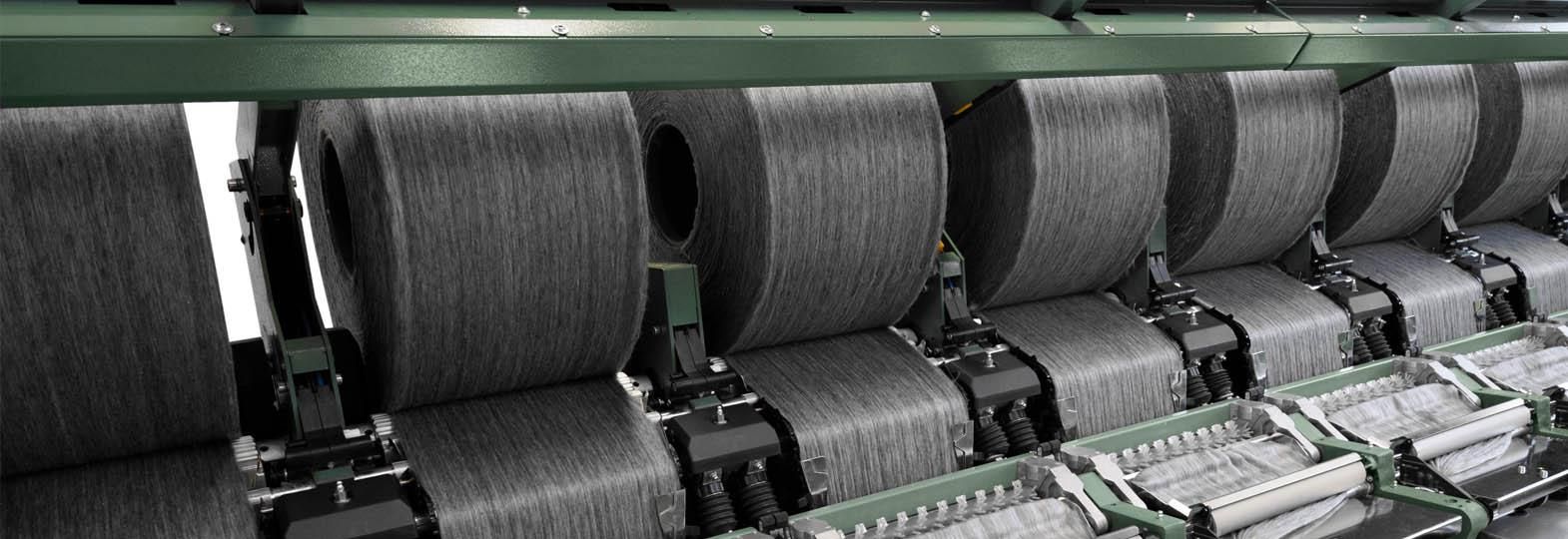The production of ring and compact yarns from blends of recycled cotton and virgin cotton places the highest demands on the spinning process. The Rieter ring and compact recycling systems were developed to meet these requirements, enabling customers to produce fine ring and compact yarns of high quality with a share of almost 40 percent recycled fibres.
Fibre blends from recycled and virgin cotton are currently mostly processed on rotor spinning machines. The few ring yarns are almost exclusively available in coarse counts and with a recycled cotton content of no more than 20 percent. The industry now faces the challenge to produce fine yarns with a higher recycled fibre content. Rieter is continuously testing new processes and settings in addition to developing technology components to achieve better results in producing fine yarns with a higher content of recycled cotton.
Cooperation with recycled fibre manufacturer Recover
During several trials, different compact yarns of fineness Ne 30 were spun and compared with each other. They included a combed yarn made from 50 percent recycled cotton fibres and 50 percent virgin cotton, and a carded yarn made from 25 percent recycled cotton fibres and 75 percent virgin cotton. The Spanish company Recover – specialised in the production of recycled cotton – provided the material for the trials. Black recycled fibres were chosen to better distinguish the recycled fibres from the virgin cotton.
Adapted settings and components
The biggest challenges in spinning recycled fibres are controlling the short fibres and reducing neps and impurities. The blending of the two fibre components was done in the blowroom with the precision blender UNIblend A 81 for the best results. The card can be configured and equipped specifically for the raw material – for example, with clothing sets specially developed for material with a high short fibre and trash content.
Removing disturbing fibres with the comber E 90
The comber E 90 can optionally be used in the ring and compact recycling systems. When combing blends of recycled and virgin cotton, disturbing short fibres and neps are removed. This makes it possible to increase the share of recycled fibres in the blend. The assumption that combing removes a large part of the recycled fibres was disproved. Only the particularly short fibres, which interfere with the process, are combed out of the blend. In the test with 50 percent recycled content, the noil extraction was at 24 percent. At the same time, unevenness and imperfections were both significantly improved. Visually, the combed fibre blend with the black recycled material was significantly darker compared to the carded position with 25 percent recycled content, even after the combing process. In the combed compact yarn, the recycling percentage reached 38 percent, which is higher than in the carded recycled yarn.
Ring spinning machine with COMPACTdrum and Q-package
For optimal processing of recycled fibres on a ring spinning machine, special fibre feeding in the drafting system is required. Drafting should generally be as controlled as possible. Trials on the ring spinning machine showed advantages for the use of the Active Cradle with a stepped nose bar. For finer yarns from Ne 20 and above, an additional pressure bar (pin) can be used. The result is an improvement in unevenness as well as a reduction in imperfections. The compacting device COMPACTdrum significantly improves the spinning stability and running behaviour of the ring spinning machine.

The ring and compact recycling system which includes the comber is very promising when the share of recycled fibres is increased, and fine yarn counts are produced. Several internal studies as well as customer results validate that combing has a positive effect when processing recycled cotton blends.








Comments